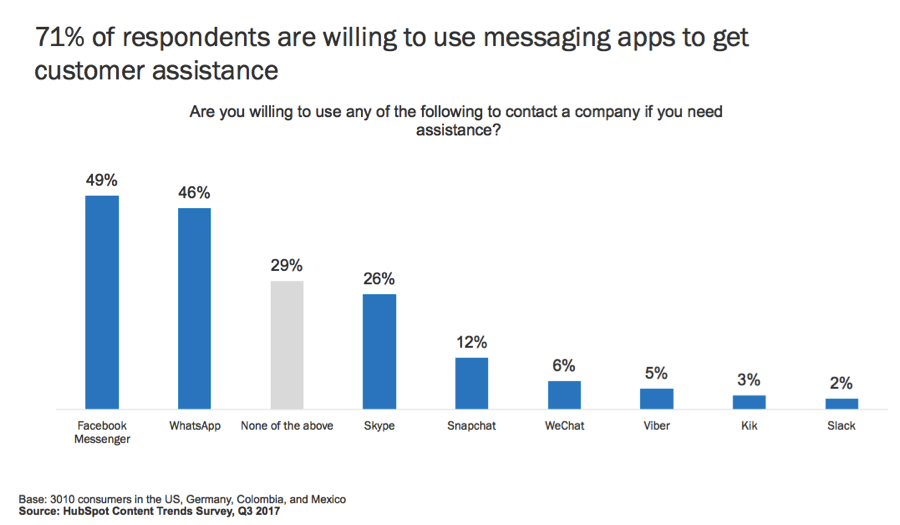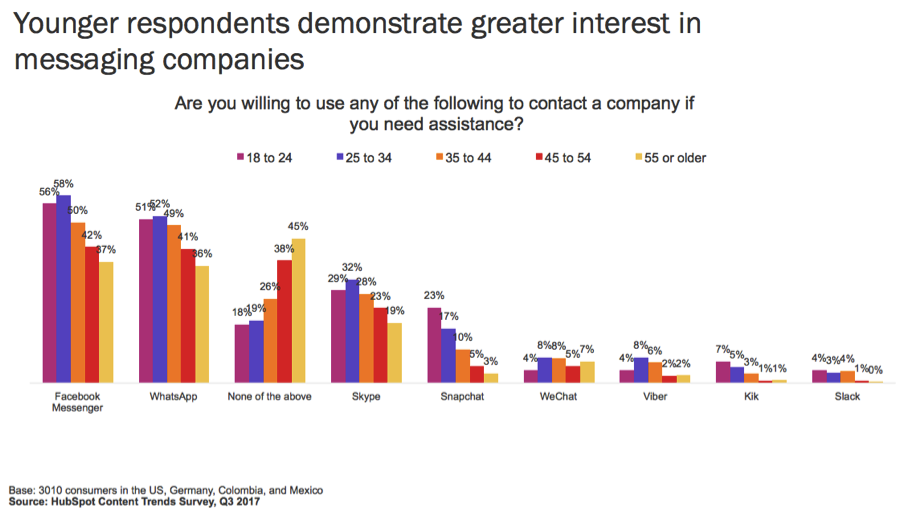Automation is a funny thing. Too little is the enemy of efficiency. Too much kills engagement.
Think about email. Automated email nurturing campaigns were the answer to individually following up with every single person who downloaded a piece of content from your website. In the name of efficiency, marketers queued up a series of emails via workflows to automatically deliver ever-more-helpful content and insights, gradually increasing the person’s trust in the company and stoking the flames of their buying intent. If at any time they had a question, they could respond to the email and get routed to a person who could help.
But as the number of inbound leads skyrocketed, this system became untenable. The dreaded noreply@company.com address was the solution for scalability. Over time, this set the expectation with buyers that marketers didn’t want to have a conversation with them via email.
Automation made us more efficient, but at the cost of relationships — ultimately defeating the purpose.
Then came live chat, and it felt like a revelation. Buyers were empowered to get answers to their questions in real time from a real person. Better yet, this interaction took place directly on the company’s website — where they were already doing their research.
We started using website chat at HubSpot in 2013. Over the past four years, live chat has facilitated countless conversations between curious prospects and our business. We even created our own live chat product — Messages — to help our customers adopt this model and serve their own prospects better, faster, and directly on the website.
But, just like what happened with email nurturing, at a certain point the system started to strain. According to our usage data, one in every 30 website visits results in a chat. For companies that receive thousands of website visits a day, trying to keep up is daunting.
And similar to how “noreply@company.com” frustrated buyers looking for information via email, customers are again the ones suffering when companies can’t manage the demands of live chat. Recent research found that 21% of live chat support requests go completely unanswered. Even if the buyer gets a response, they can expect to wait an average of 2 minutes and 40 seconds for it. I wouldn’t call this “live” — would you?
Responding slowly (or failing to respond at all) on a channel advertised as “live” is a contradiction in terms. Forcing customers to wait after we’ve set the expectation of immediacy is unacceptable. We can do better.
Today, we’re at the same inflection point we came to with email. What should companies do to accommodate the tidal wave of live chat conversations? Hiring an increasing number of chat coordinators clearly isn’t a scalable answer. But more importantly, apps like Facebook Messenger, WhatsApp, and Slack have changed consumers’ definition of a real time conversation (and also created the infrastructure to support them). If marketers are going to advertise “live” channels — and we must if we want to stay relevant — we need to step up and deliver.
It’s with this in mind that I assert the era of live chat is over. “Conversations” were once synonymous with website chat and incoming phone calls, but in the world of messaging apps and bots, the website is only one small piece of the puzzle. Buyers are thinking beyond the website, but most businesses aren’t.
Buyers’ New Expectations for Business Conversations
Website chat enabled buyers to have conversations with businesses like never before. It was a good start, but just that — a start. Similar to how inbound changed marketing, social changed content discovery and consumption, and conversational search changed SEO, messaging apps have changed how buyers expect to interact with businesses.
Why tether your prospects and customers to your website when they want to chat? Why force them to re-explain their question when they switch channels, or when chat coordinators switch shifts? Why make them wait until the next rep is available to get the information they need right now? This isn’t world-class marketing and customer service even today, and it’ll become even more archaic and frustrating in the years to come.
Think your buyers wouldn’t want to interact with your company via a messaging app? Actually, 71% of consumers globally are willing to use messaging apps to get customer assistance.

Even if your prospects fall in the “none of the above” bucket today, they won’t forever. Cutting the data by age foretells the inevitability of messaging apps in a business context over time: The majority of consumers currently between the ages 18 and 34 are willing to use Facebook Messenger or WhatsApp to contact companies for assistance.

When communicating with a business, today’s buyer expects that:
- Conversations happen where they are. That might be the website, but it could also be social media, or Skype, or Slack, or a messaging app.
- Conversations are portable. Regardless of where a conversation gets started, it should be able to be transferred to any other channel seamlessly. A thread kicked off on live chat should be able to be passed to Facebook Messenger or email without data loss or crossed wires.
- Conversations have context. Context shouldn’t leave with the person who fielded the initial inquiry. All of a customer or prospect’s historical interactions and information should be attached to a common record which populates instantaneously.
We need new technology paired with automation to live up to our buyers’ expectations and make these types of conversations a reality. On the technology side, live website chat is part of a conversation strategy, sure, but it can’t be the whole strategy. As for automation, marketers got it wrong with email, but we have the opportunity to get it right with chat.
Stop Chatting, Start Having Conversations
At HubSpot, we’ve always been about helping marketers and salespeople adapt to the ever-changing modern buyer. It’s time, once again, to step up and serve our prospects and customers the way they expect — and deserve — to be served.
Fortunately, this is possible today with the right strategy. Businesses need to do the following three things to enable truly valuable conversations at scale:
1) Make it possible for buyers to have conversations with your business where they are.
Create a presence on website chat, messaging apps, social media — wherever your prospects might want to talk.
2) Add an automation layer with chatbots.
Set up bots that immediately respond on each channel (or even proactively kick off the conversation) and are equipped to answer common questions. This eliminates customers’ wait time and provides immediate responses for the majority of queries. Bots put the “live” in “live chat.”
3) Adopt technology that helps bots and human service reps to “tag team.”
When a complex question arises, the right technology can loop in a human chat coordinator, and provide a unified record of everything that’s happened in this interaction as well as the customer’s entire history. This way, the context never gets left behind in the handoff between bot and human, or the switch from one communication channel to another.
Marketing automation used to solely refer to workflows + drip email campaigns. Today, it’s much more than that. The new marketing automation is conversational technology + bots. This is automation that makes us more efficient, but more importantly, more effective for our customers. This is automation that creates relationships instead of frustration.
Today, we announced HubSpot’s acquisition of motion.ai — a platform that enables anyone to build and deploy bots across any messaging channel. With this acquisition, we not only hope to enable marketers, salespeople, and service folks to serve their customers better, faster, and with more context than ever before, but we also intend to create the “all in one” experience our customers have come to rely on.
The only constant in business and consumer behavior today is change — which I know firsthand can feel overwhelming. But you’re not in it alone. As your customers change, HubSpot empowers you to adapt to and surpass their expectations. As your business grows, we grow with you. And when new technology emerges, we build it into the growth stack so you can stay ahead of the curve without the headache of wrangling countless disparate apps.
Live chat is the standard today, but I think we should aspire to do better for our buyers. Now I want to hear from you. Do you think live chat in its current manifestation is dead? Is your company prepared to meet the expectations of today’s buyers, and the buyers of tomorrow?
Send HubSpot a note on Facebook Messenger. Tell me what you think the future of communication between buyers and businesses should be.
Let’s have a conversation.
![]()
<
p class=”wpematico_credit”>Powered by WPeMatico







